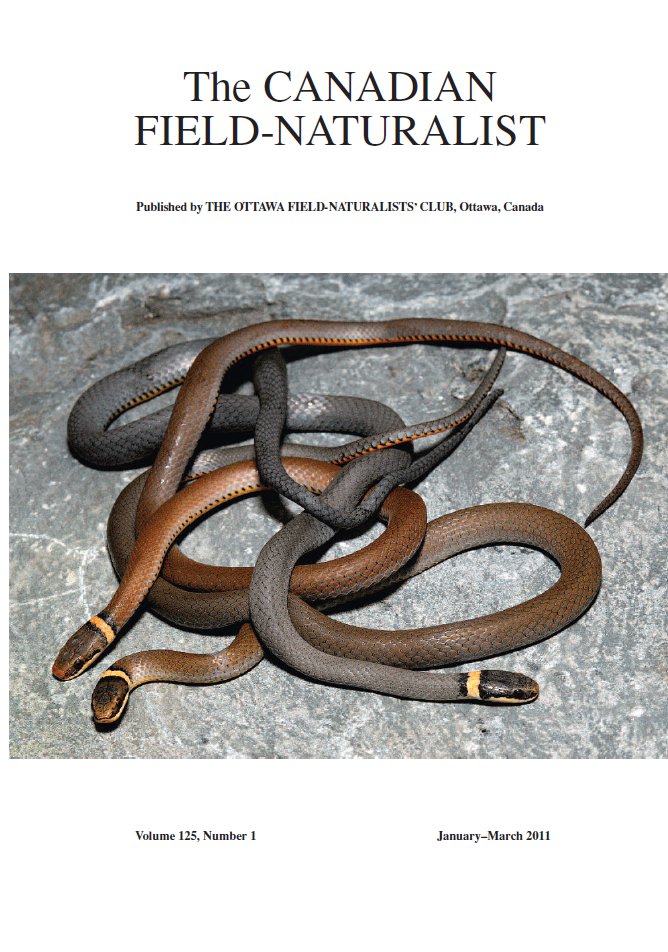Some Observations on the Pollination of Round-Leaf Orchid, Galearis (Amerorchis) rotundifolia, Near Jasper, Alberta
DOI :
https://doi.org/10.22621/cfn.v125i1.1124Mots-clés :
Round-Leaf Orchid, Galearis rotundifolia, pollination, bee, Hymenoptera, Osmia proxima, fly, Diptera, Eriozona laxus, Eristalis hirta, Eristalis rupium, Eupeodes lapponicus, deceptive pollination, geitonogamous pollination, fecundity, Jasper, AlbertaRésumé
On June 16 and 17, 2010, data were collected on pollination in a population of Galearis rotundifolia at the confluence of the Maligne and Athabasca Rivers north of Jasper, Alberta. The primary pollinator was the bee Osmia proxima and this species was also the most frequent visitor. While most flies were visitors, four species, Eriozona (Megasyrphus) laxus, Eristalis (Eoseristalis) hirta, Eristalis (Eoseristalis) rupium, and Eupeodes (Lapposyrphus) lapponicus also served as pollinators. It is estimated that 25-44% or more of flowers were pollinated in the previous year, a relatively high percentage that supports the "advertisement model" for evolution of food deception in orchids. The pollinating bee or fly lands on the lip and probes the spur which is approximately the same length or longer than the tongue. In the process of pushing into the flower and backing out, the sticky contents of a bursicle are either discharged by the backward movement of a flap or by forward pressure. Either of these actions may release adhesive fluid which fixes the viscidia onto the front of the insect's head. The gradual bending forward of the caudicles reduces likelihood of pollination of consecutively visited flowers with pollen from those recently visited flowers on the same plant (geitonogamous pollination) and thus promotes outcrossing.
Erratum included.
Téléchargements
Numéro
Rubrique
Licence
Copyright for Canadian Field-Naturalist content is held by the Ottawa Field-Naturalists' Club, except for content published by employees of federal government departments, in which case the copyright is held by the Crown. In-copyright content available at the Biodiversity Heritage Library is available for re-use under a Creative Commons Attribution-NonCommercial-ShareAlike 4.0 (CC BY-NC-SA 4.0) licence. For usage of content at the BHL for purposes other than those allowed under this licence, contact us.
To request use of copyright material, please contact our editor, Dr. Dwayne Lepitzki: editor -at- canadianfieldnaturalist -dot- ca





